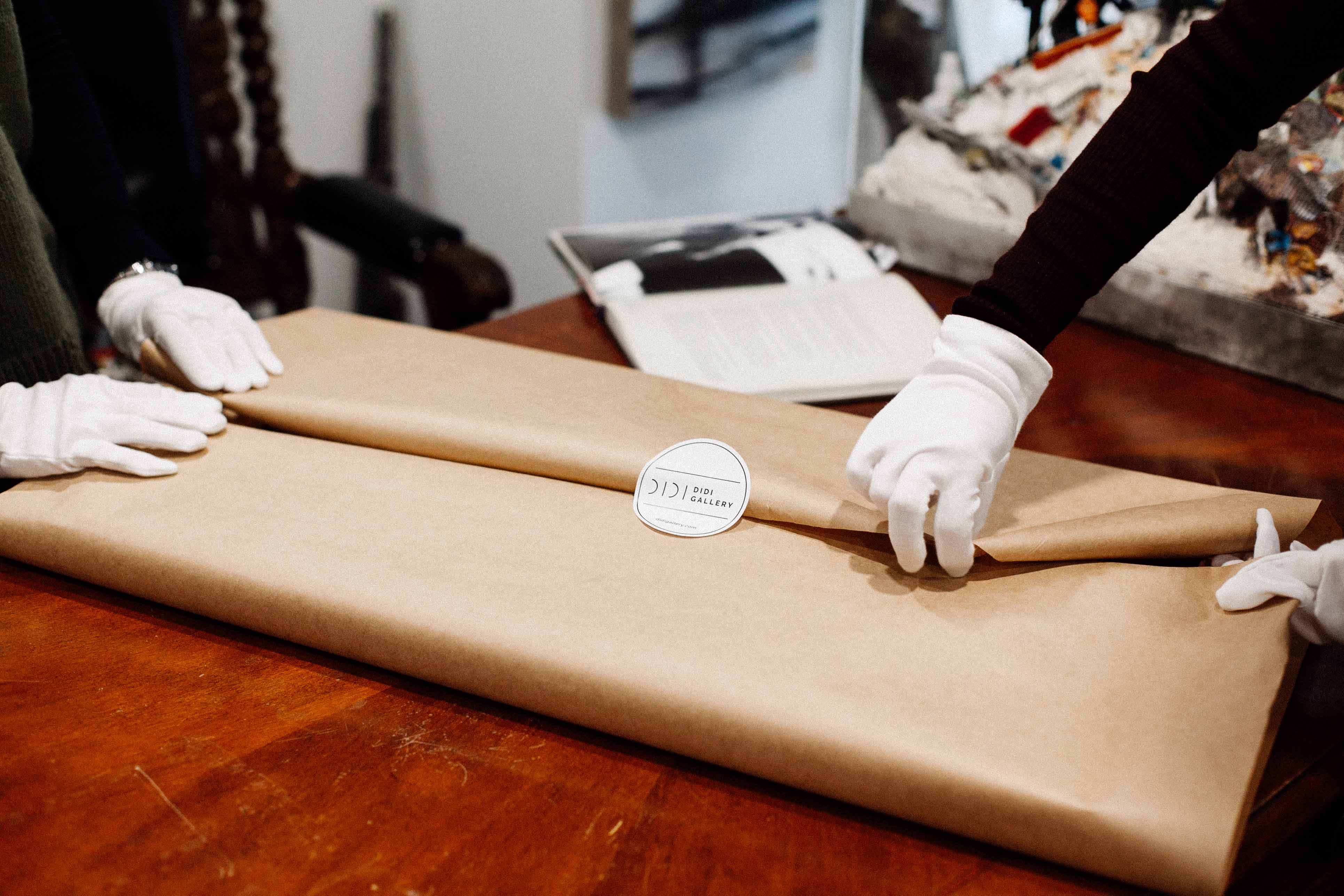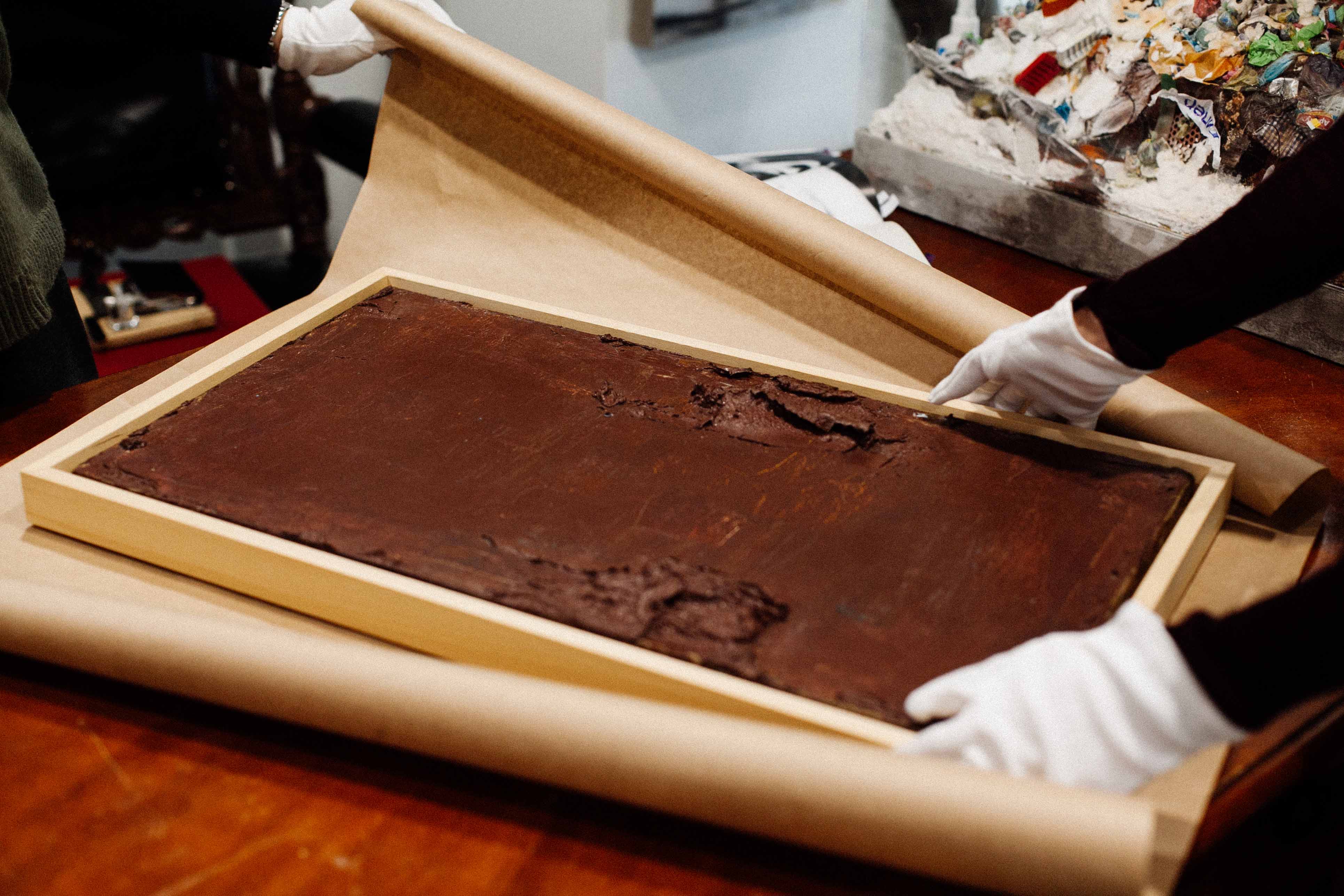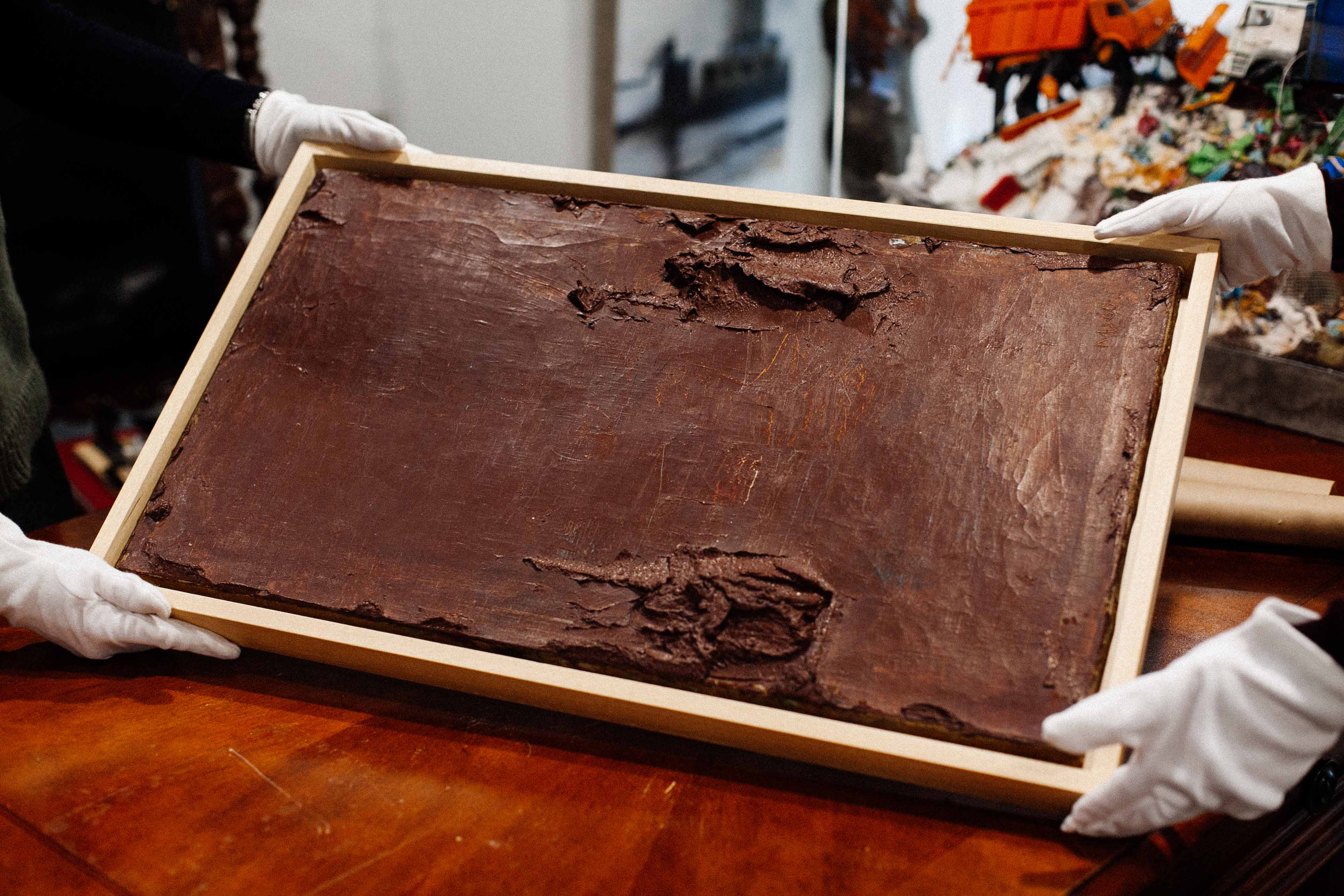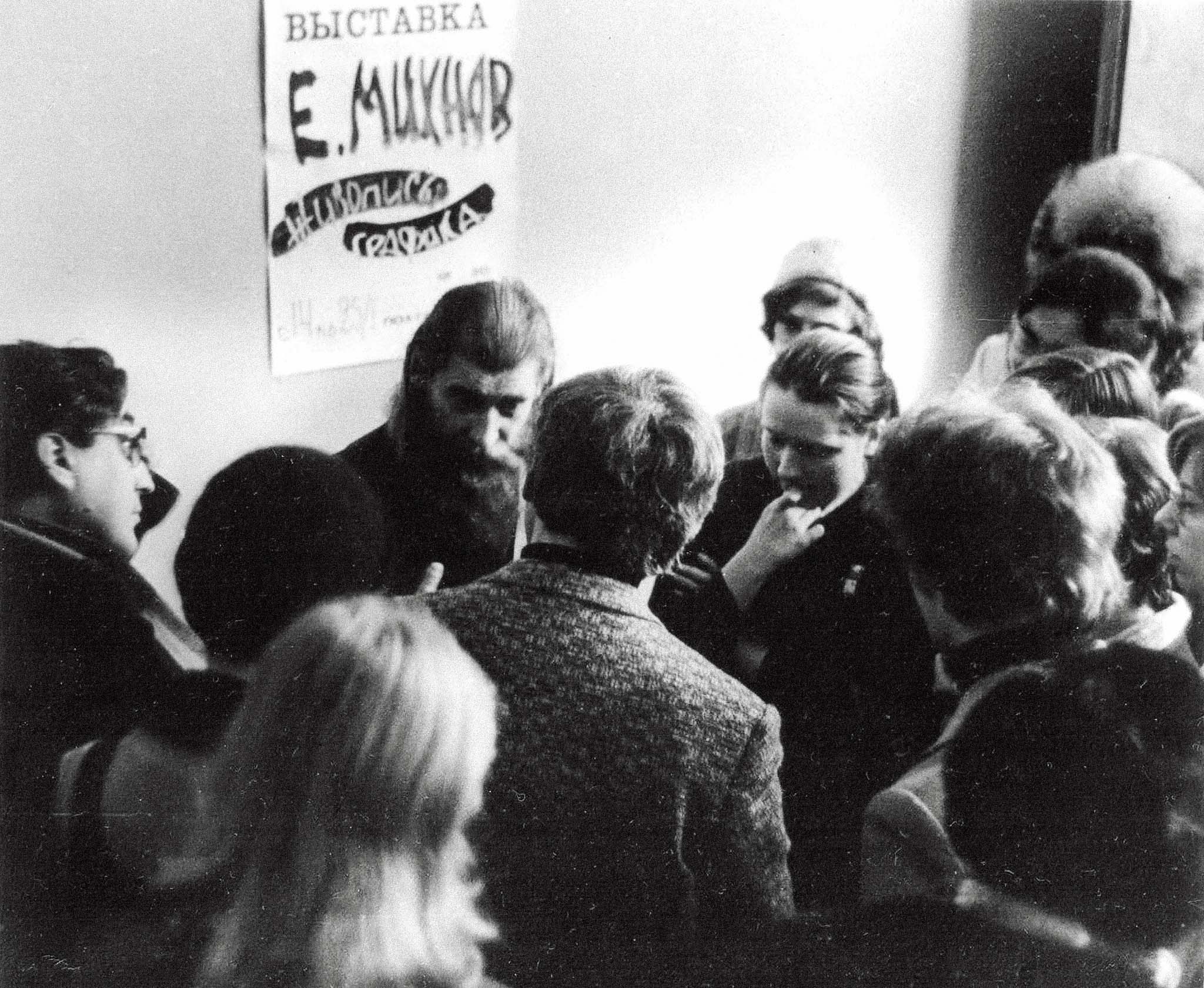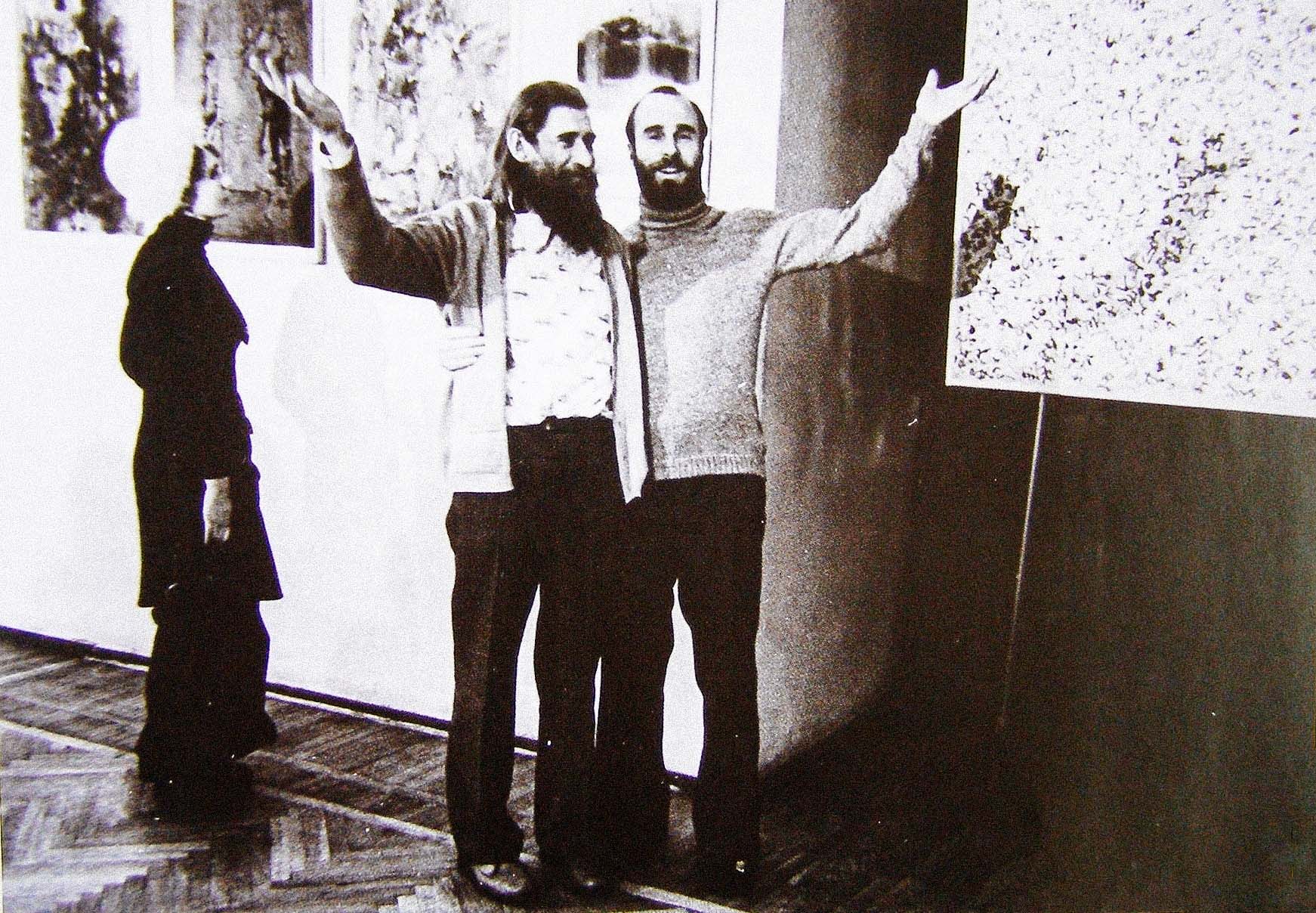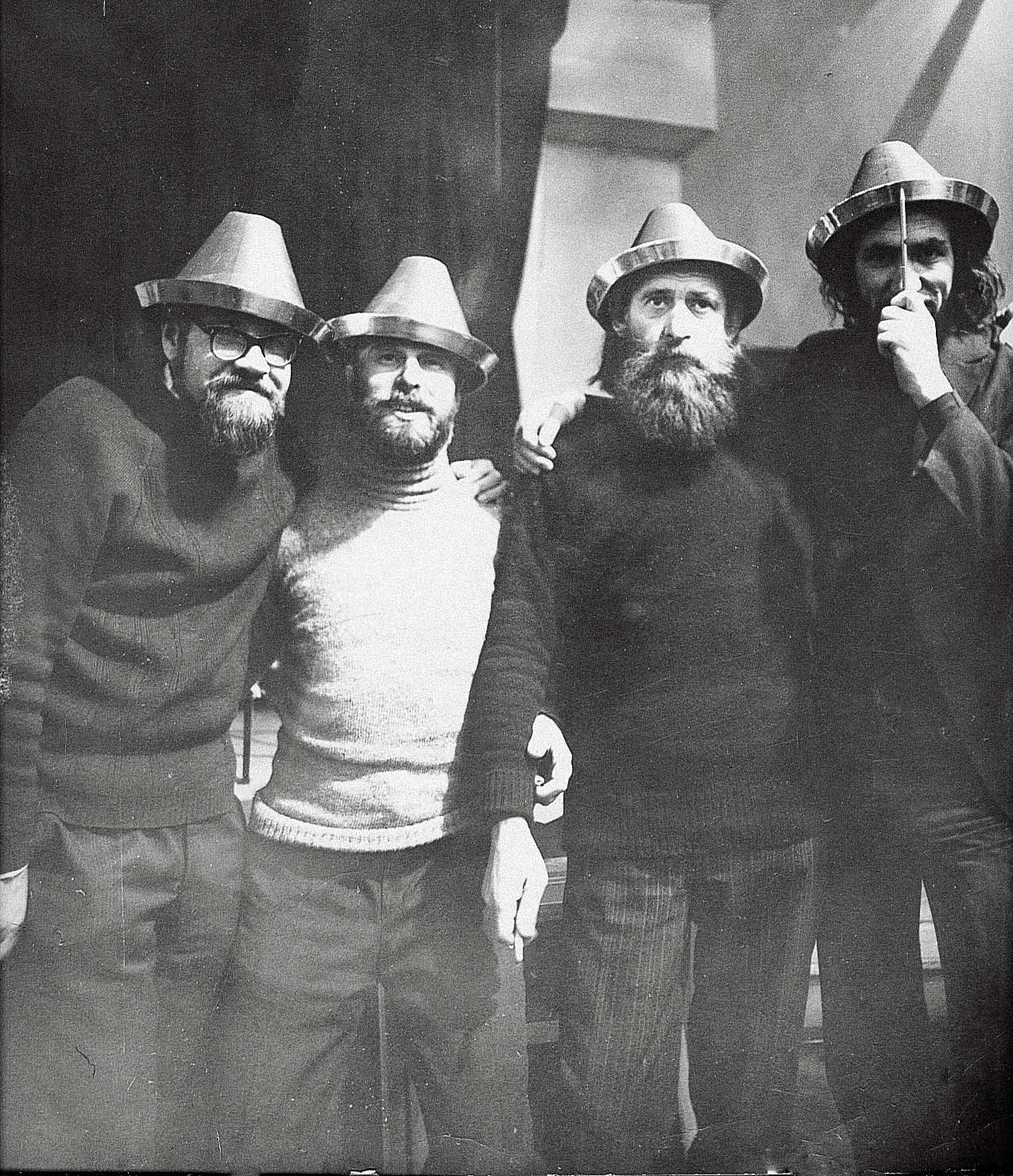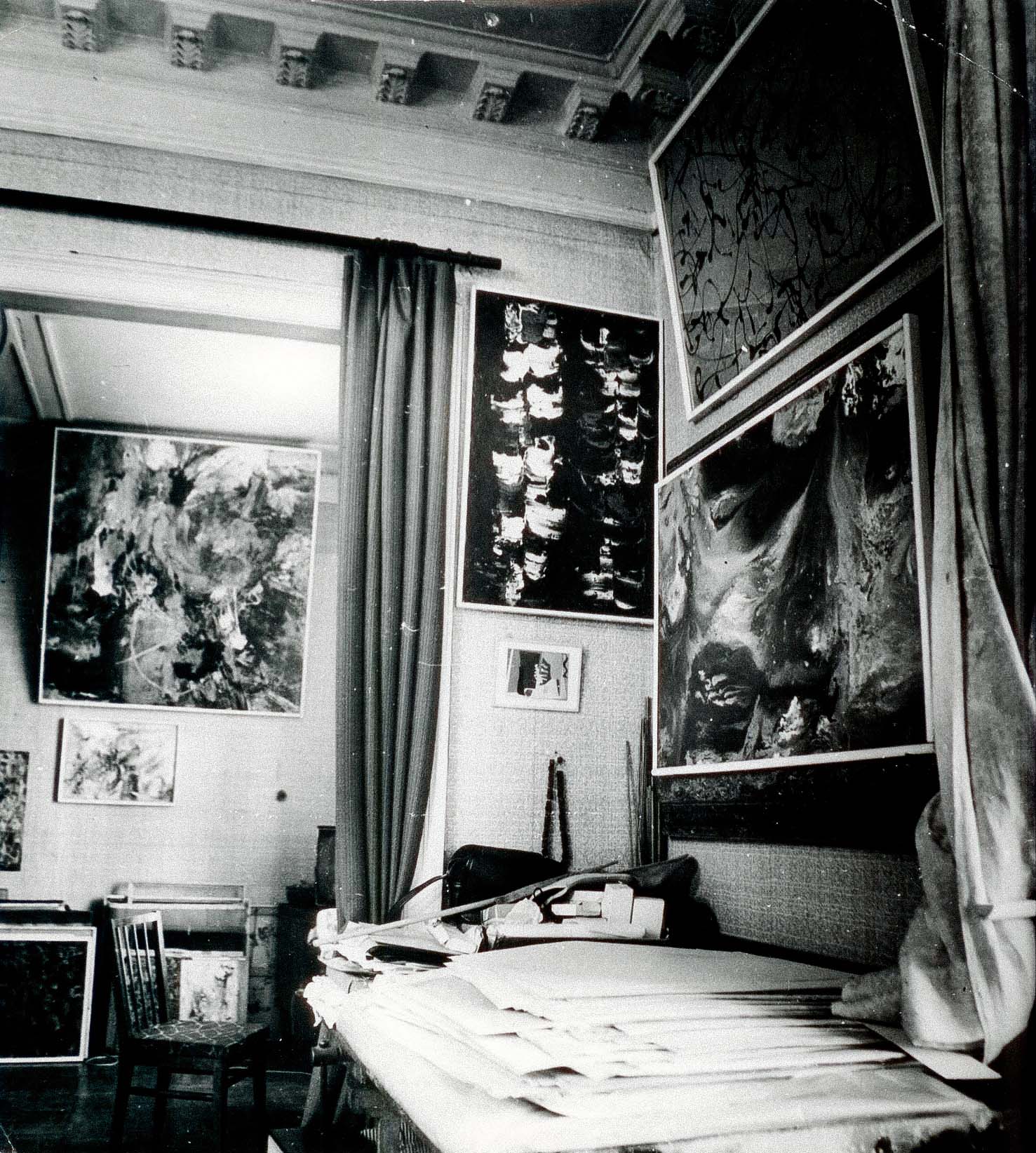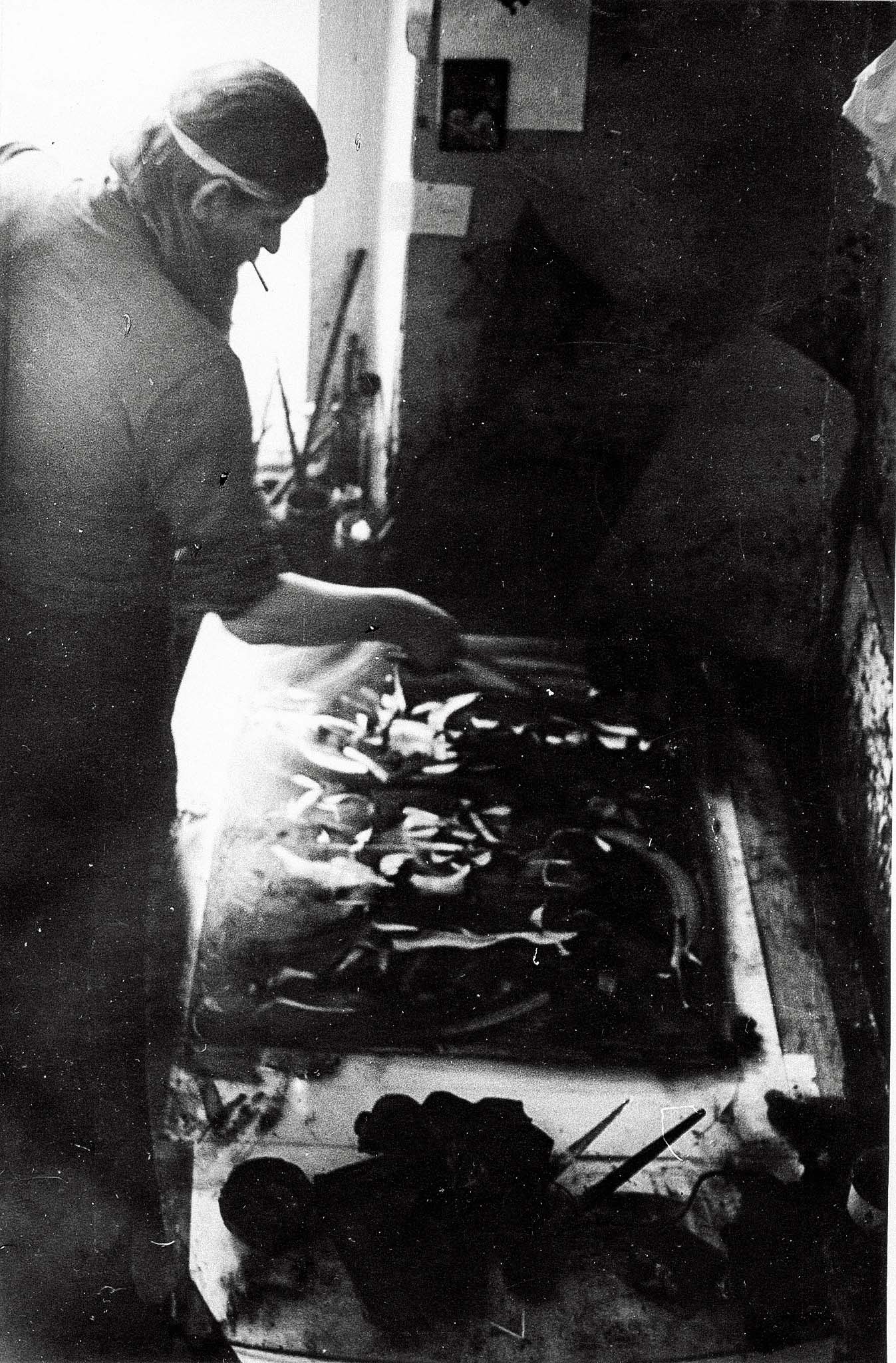
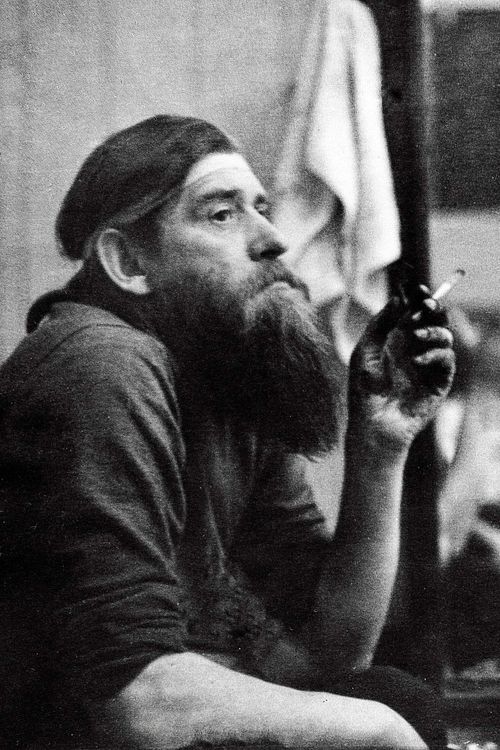
6/12/23
Evgeny Mikhnov-Voitenko | Cosmoscow 2022
We have prepared a material about Mikhnov in the words of Mikhnov - we have found the most interesting quotes about life and art from personal notes, interviews and memoirs of contemporaries. And the text was supplemented with rare archival photographs from the life of the author and the Leningrad artistic underground of the 1960s-1980s.
DiDi Gallery has been dealing with the legacy of the Soviet abstract artist Yevgeny Mikhnov-Voitenko for a couple of decades, but this year the incredible happened: they managed to find and return to St. Petersburg works from the last exhibition of the artist, held in Helsinki in 1989. Shortly before the exhibition, the artist died from cancer, and the works were bought by a Finnish gallery owner and remained hidden in a personal collection for 34 years. For a long time it was believed that the works were stolen or lost forever, like many others who settled in private collections. Mikhnov himself always said "Everything comes years later." And fortunately, it turned out to be true. Fate brought us together with this mysterious man, so this year at Cosmoscow we have the honor to show the author's new works for the public and researchers. And very soon we are preparing a retrospective exhibition project by Evgeny Mikhnov-Voitenko at the DiDi Gallery.
[Evgeny Mikhnov-Voitenko] (https://store.didigallery.com/catalog/authors/mihnov-vjtenko-evgenij/1) (1932 - 1988)
In the history of unofficial Soviet art, Evgeny Mikhnov-Voitenko forever remained a "Russian Pollock". Indeed, a young student of the Leningrad Institute from the Department of Scandinavian Languages, and later a student of the Theater School, was very inspired by the “action painting” of an American colleague. In 1956, Mikhnov-Voitenko, one of the first Soviet artists, began to work in an abstract-expressionist manner and over the next years made many formal discoveries in this direction. Combining in his experience and training with the legendary theater artist N. Akimov, and work at a painting and design plant, co-creation and communication with the most talented authors of his time (Aronzon, Knaifel, Ponizovsky), Evgeny Mikhnov was able to come up with and develop a truly expressive style, without words and images, expressing the lively and active spirit of the thaw, the mood of the Leningrad underground and the current problems of European and American art visible from afar.
*** “Art is not a form of truth, but a form of activity. People get ready or reconcile with the Gestalt picture of the world - I create it myself. Insatiable people are good. The main thing in art is to excite. To excite with a new step (not a plot) of the imagination.”*** (1961)
The late 1950s and early 1960s saw a time of active reflection on the essence of art and one's role in it. In 1951, Mikhnov finally moved to Leningrad after childhood in Kherson, evacuation in Semipalatinsk and schooling in Minsk. This year, Evgeny enters the Scandinavian department of Leningrad University, but he gets real pleasure from visiting the drama circle in the Palace of Culture named after. First Five Year Plan. In 1954, 22-year-old Eugene decides to give up foreign languages and enters the production department of the Theater Institute, where he enters a course with the legendary theater designer Nikolai Akimov. Akimov's school became a peculiar phenomenon in the development of Leningrad art of that time, because almost all of his students later became famous and sold artists all over the world: Oleg Tselkov, whose works were hung by the grandmother of one of Carrie Bradshaw's friends in the television series Sex and the City; Marina Azizyan, colleague and friend of Federico Fellini; Levon Hayrapetyants, who reinvented Soviet industrial design; Eduard Kochergin, chief artist of the BDT im. Tovstonogov in the 70s and many others!
*** “... No one will believe that you are really strong if you don’t give someone in the face in a year or two. He will believe that you are so-and-so, but will not believe that you are strong. Strength must be proven by facts. The facts of my painting to some extent convince one or two people ... When people do something, it convinces, when paint does something and an artist is somewhere, it convinces those who are too rare - gifted by God. ***
*** Art has been and will always remain a language, and there is nothing more intolerant in art than language in itself, and not the language of man for man... Art becomes not art, but a personal matter (a language for oneself)... I don't think about the language I use with Aunt Motya, I'm talking about the language I use to communicate with the gods. The state of a bodhisattva is the understanding of the emptiness of the world. Seek no other shelter except for himself. /Buddha/ We are because we want to be. We suffer because we crave pleasure... Absolute knowledge means total ignorance of things. Man is doomed to be himself, only himself and always himself. Life tends to move against the rest of the universe. A man-artist is saved by gluttony - displeasure increases energy.
With all his enthusiasm for the theater, Yevgeny Mikhnov refuses to work at the BDT and gets a job at the Leningrad Combine of Painting and Design Art (KZhOI). He is ordered decorative panels for canteens, recreation centers and restaurants. There is a feeling of thaw freedom and faith in a creative and free future. Since 1964, Eugene has become a regular at the Saigon underground cafe, next to which he lives and works in a communal apartment on the street. Rubinstein. He meets bright poets and artists, makes friends with Leonid Aronzon and Alexander Altshuler. And gradually develops his own pictorial theory. Mikhnov strove to enter a pure pictorial space, to free the world he created from relations, temporary, to capture the gestalt of the simplest pictorial movement. His works are absolute formal freedom, the energy of material and color, but the main thing is inner freedom.
***“To be an artist, it is not enough to be able to draw a similar natural form. The forms taken must grow from within, must be the spontaneous production of materials... The need for the unknown... I began to study the nature of materials, to look at paint as paint. Strange as it may seem, but it required a great effort of the imagination, because each material required a different treatment with itself, and each had its own capabilities, reactions, grew lines and spots characteristic of its nature...
What is needed is a fresh sense of the material, which is the first prerequisite and the hope that will eventually lead to the beauty (by no means exploitation) of an organic, born form emanating from the inner structure. Plasticity is the result of the process, growth, reaction inherent in the structure... Revealing the highest possibilities of the material. Poverty is not simplicity... Simplicity is something starting from itself (nature), unintentionally born. Organic.”*** (1968)
Since the 1970s, he has received almost no orders for interior decoration. The artist remains in the lonely space of his studio, getting materials from acquaintances - after all, to be left without a state. orders, not to be in the Union of Artists, practically meant losing the opportunity to purchase paints, paper, canvases.
There is an entry in his notebooks:
***“Tragedy - there is no one to give. Art is a school of courage (one on one) in solitude. Life is a cry. There is only the idea that there is something. When I am not working or seeing sympathetic eyes, I feel no difference between myself and any creature. It should touch the fresh strings of the imagination. Genius in a certain sense is, first of all, laziness... ... not an artist is a meat grinder. Its derivative is minced meat. Sleep is the best thing in this world! sleep! just sleep... if you could! He hanged himself on every nail of his house.
***Communication with anyone gives me almost nothing, but rather activates what God has given me, but remains in a hidden form. Often this is a very long and painful process - to give the right of being to any canvas. Each perceptibly small time - a moment - gives its material, tension, chaos, which must be streamlined. I remind myself of the clergyman who came out of the temple to hustle for alms with the poor and the poor... Today's generation is forced to lie more and more convulsively than the elementary bourgeois. Law? — I bow to the exception. An artist is an aggressor with big eyes. experimental life. A person is an architecture that I have never seen and never will see for a long time. Look at my curtains, the folds are flaming gothic; no - flaming gothic. ***
***“Return to primary contemplation. Why are people who create, distribute beauty, with the necessity of a falling stone - unhappy, persecuted, self-tortured, etc.? The artist thanks his own children - works, for what they have happened. Once again: Your Highness is Loneliness.
(1967)
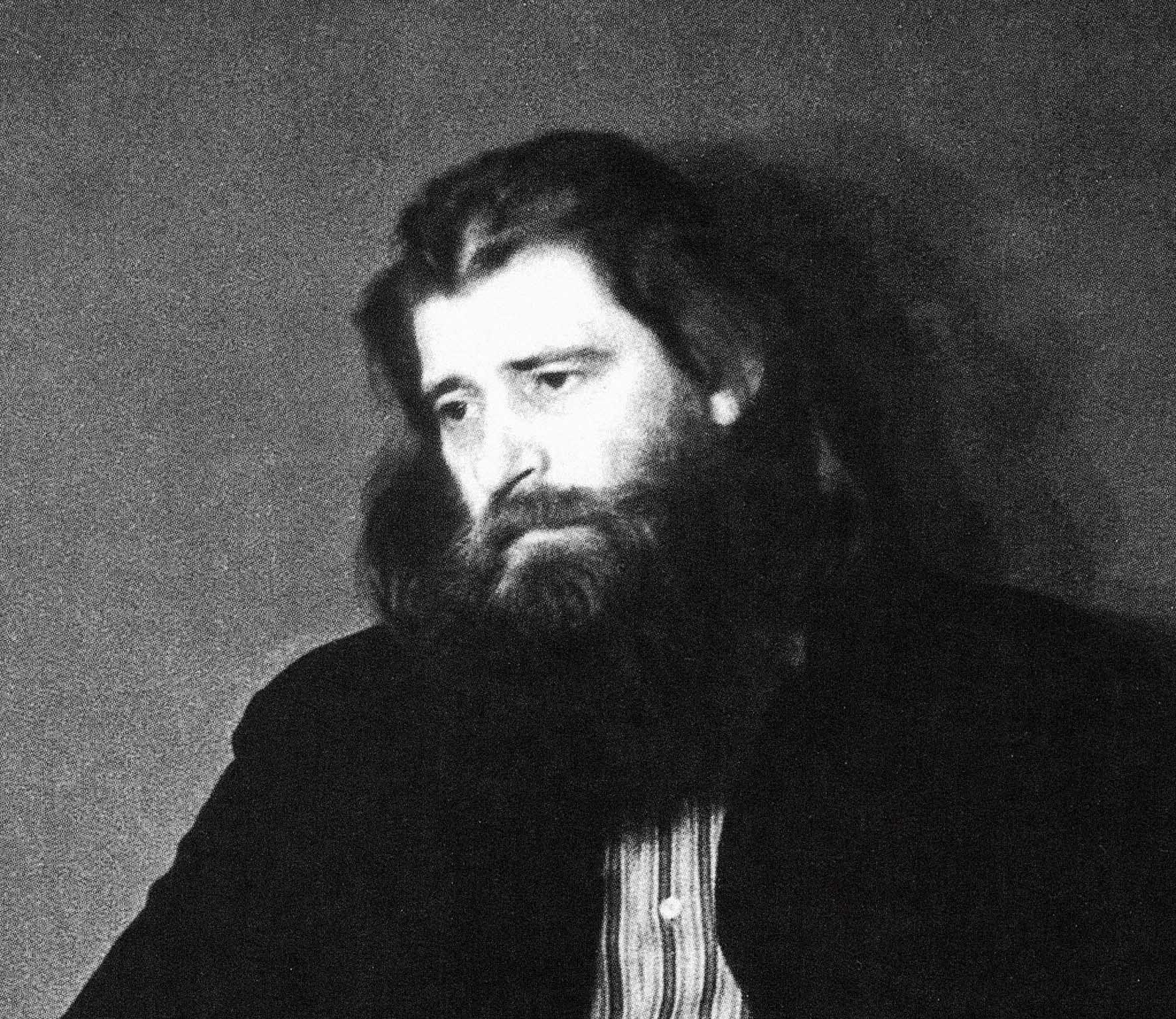
Over many years of daily exhausting creativity, Yevgeny Mikhnov lacked an active interlocutor capable of giving him an impulse to move forward, to go beyond his thoughts. The artist himself believed that hermitage hurt him, but the later period of his work can be described as closed and hermitic. The only ones with whom it was truly unpleasant for him to part - his works. He often bought back once sold canvases.
Our booth Cosmoscow will feature paintings from 1956-1966, as well as graphics from the period 1960-1977.
What is a genius? This is a common occurrence. The norm of human existence, the rest are deviations. Beauty is the only thing that justifies our existence.”
(1973)
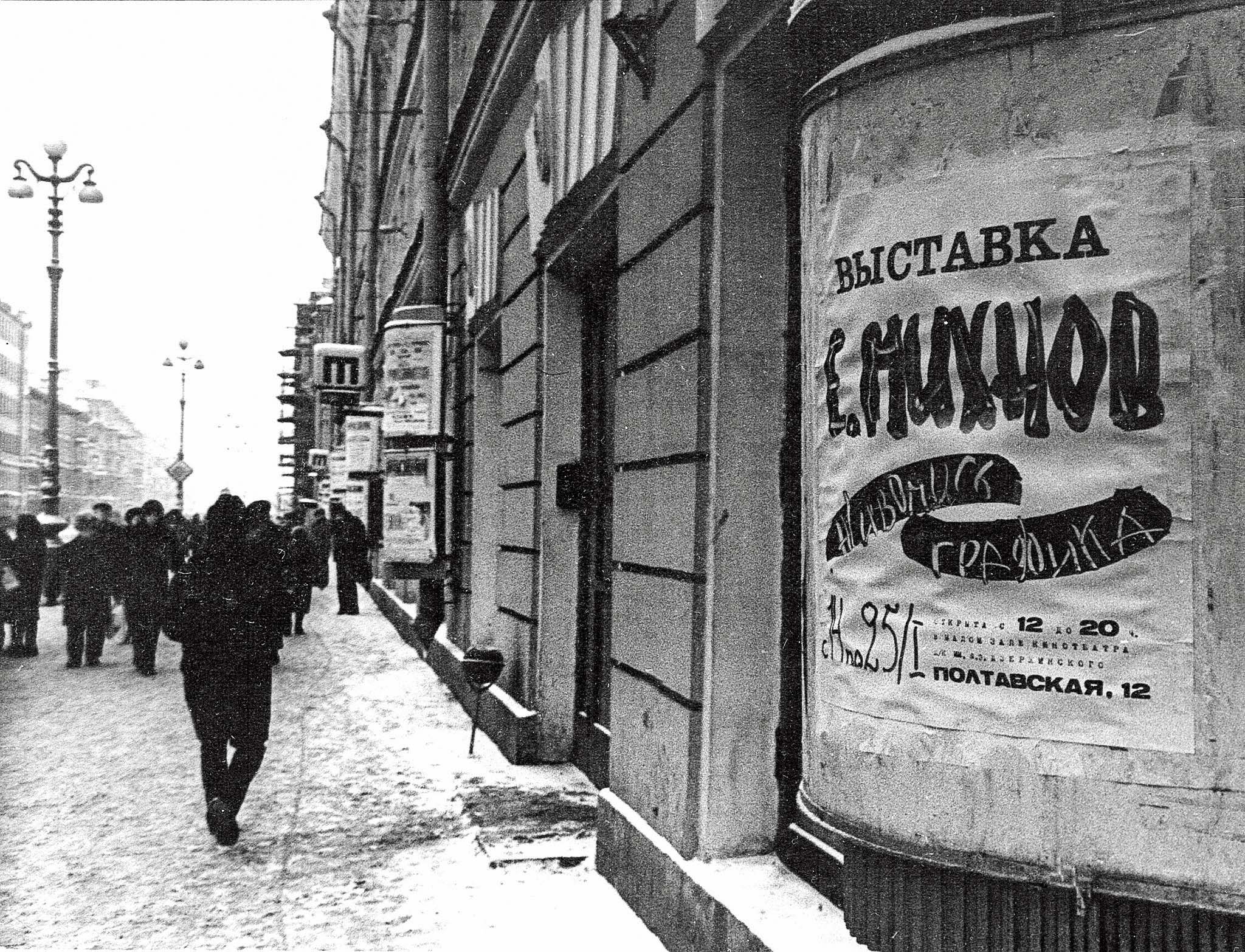
Photo: Gennady Prikhodko, Elik Yafarov
